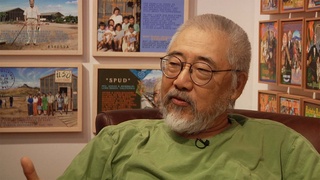Interviews
Visit to assembly centers by E. Stanley Jones
The thing I remember the most in assembly center was a guy—he was a very famous minister, E. Stanley Jones. He was America’s top evangelist, And he said something that stayed with me the rest of my life, I think. And, in fact, I would tell my Sunday school kids this.
He said, “It’s not so important what happens to you as what you do after it happens.” And when he came there this week, he knew that all of us had just lost our homes, our jobs. We were ousted from our home town, and that we were all really, like, feeling very bad. And so, he tried to, I guess, lift us up to say that “It isn’t so important what happens to you, but what you do after it happened.” And I really thought it made sense that we gotta, we gotta make the camp as nice as a camp for everybody. And we should all help each other out, and stuff.
Date: June 16, 2003
Location: California, US
Interviewer: Karen Ishizuka, Akira Boch
Contributed by: Watase Media Arts Center, Japanese American National Museum.








